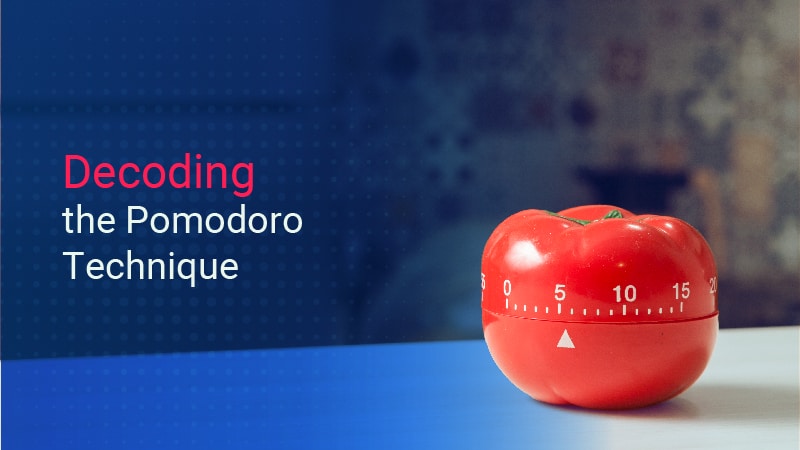Reasons to Use the Pomodoro Technique at Work. If you’ve tried all the hacks in the book yet you still struggle with procrastination, the Pomodoro Technique may be the time-management system you’re looking for. Italian university student Francesco Cirillo founded the method in the late 1980s. Pomodoro is the Italian word for tomato, and Cirillo named the method after a tomato-shaped kitchen timer he used. Most people today use pomodoro apps as their pomodoro timer.
7 Reasons To Use the Pomodoro Technique at Work
In this article, you can know about 7 Reasons To Use the Pomodoro Technique at Work here are the details below;
The key to the Pomodoro Technique is its simplicity. The idea behind the Pomodoro method is to divide large tasks into smaller chunks, and to work for a set amount of time without distraction, while still allowing for frequent breaks. The classic Pomodoro Technique calls for a “pomodoro,” a short 25-minute work sprint followed by five minutes of rest. After your fourth consecutive pomodoro session, you should take a longer break of 20-30 minutes. From the moment you set the pomodoro, your work time should be free from distractions, including notifications and phone calls.
Does the Pomodoro Technique at work boost productivity? Read on for seven reasons why you should be using the Pomodoro Technique at work.
1. Break up your workday with the Pomodoro Technique
The Pomodoro Technique works together with task chunking to supercharge productivity. Task chunking involves breaking down large tasks into smaller, more manageable parts. These smaller tasks fit in perfectly with the Pomodoro Technique’s short sprints.
Frequent breaks throughout your workday provide opportunities to switch between tasks in a more sustainable way. While taking frequent breaks seems like it could break concentration, it actually benefits your productivity and creativity to let your mind rest.
2. Improve focus with the Pomodoro Technique at work
The self-imposed limits of the Pomodoro Technique help you get into your workflow and eliminate distractions. The 25-minute intervals of a pomodoro are short enough to work on tasks without being easily distracted. This prevents multitasking and improves focus and productivity. Also check learn to code
At Clockwise, we recommend at least two hours of uninterrupted Focus Time for employees to work on tasks without the distraction of meetings. How does the Pomodoro method fit into Focus Time? We recommend focusing a batch of four pomodori (the plural of pomodoro) on sub-tasks of the same larger task during Focus Time in order to avoid frequent context switching. Be sure to use Flexible Meetings to ensure that your Focus Time is protected and that your pomodori aren’t interrupted by meetings.
3. Overcome procrastination
The 25 minute blocks force you to get a task done within the time limits. These limits encourage working quickly and fitting tasks into a shorter time period. With time limits, you’re less likely to procrastinate because you know you only have a set amount of time to finish the task. The Pomodoro method makes tasks less daunting which leads to less overwhelm and stress — two feelings that feed procrastination.
4. Manage and plan your time better
The Pomodoro Technique has built in accountability. After each pomodoro, jot down what you accomplished. Over time, this gives you a crystal clear picture of how long it actually takes you to complete tasks so you can better plan your weeks and quarters.
5. Find and maintain every day motivation
The timer ticking down and the promise of a break can help motivate you to work on tasks that you normally dread. Getting started on an unpleasant task is always the hardest part, but it can be easier when you know you only need to start with 25 minutes of work.
The sense of urgency that a pomodoro session creates can encourage you to find more creative solutions to your tasks, so that you can get more done during your pomodoro. Knowing that you have a 30-minute break coming soon can help you move through pomodori.
6. Regular breaks help you move
Having a 5-minute short break every half hour can help you take a much needed break from sitting. Getting up to move frequently throughout the day can help avoid back pain and improve your overall mood. You can use your break to get up and get some water, walk outside for a few minutes, or go pet your dog.
Faced with a 5-minute break, you may find yourself unmotivated to do passive things like scroll through social media, because you know that once the 5 minutes are up you need to get back to work.
7. Prevent burnout and mental exhaustion
Taking frequent breaks can help prevent burnout and mental fatigue. Taking a few minutes to look away from your screen and let your mind wander can do wonders for preventing burnout and anxiety. The attractiveness of the Pomodoro Technique is that it forces you to take breaks. When the timer rings, you must take your five-minute break. These frequent breaks help to prevent burnout.
Going forward
The Pomodoro Technique is a popular time control method because it improves productivity without leading to burnout. Whether you’re using a classic tomato timer or an app, using the Pomodoro Technique at work can help improve productivity and lead to overall better time management. Click here for our top three pomodoro timers — we’ve included options for every platform, including Mac, Android, and more!
